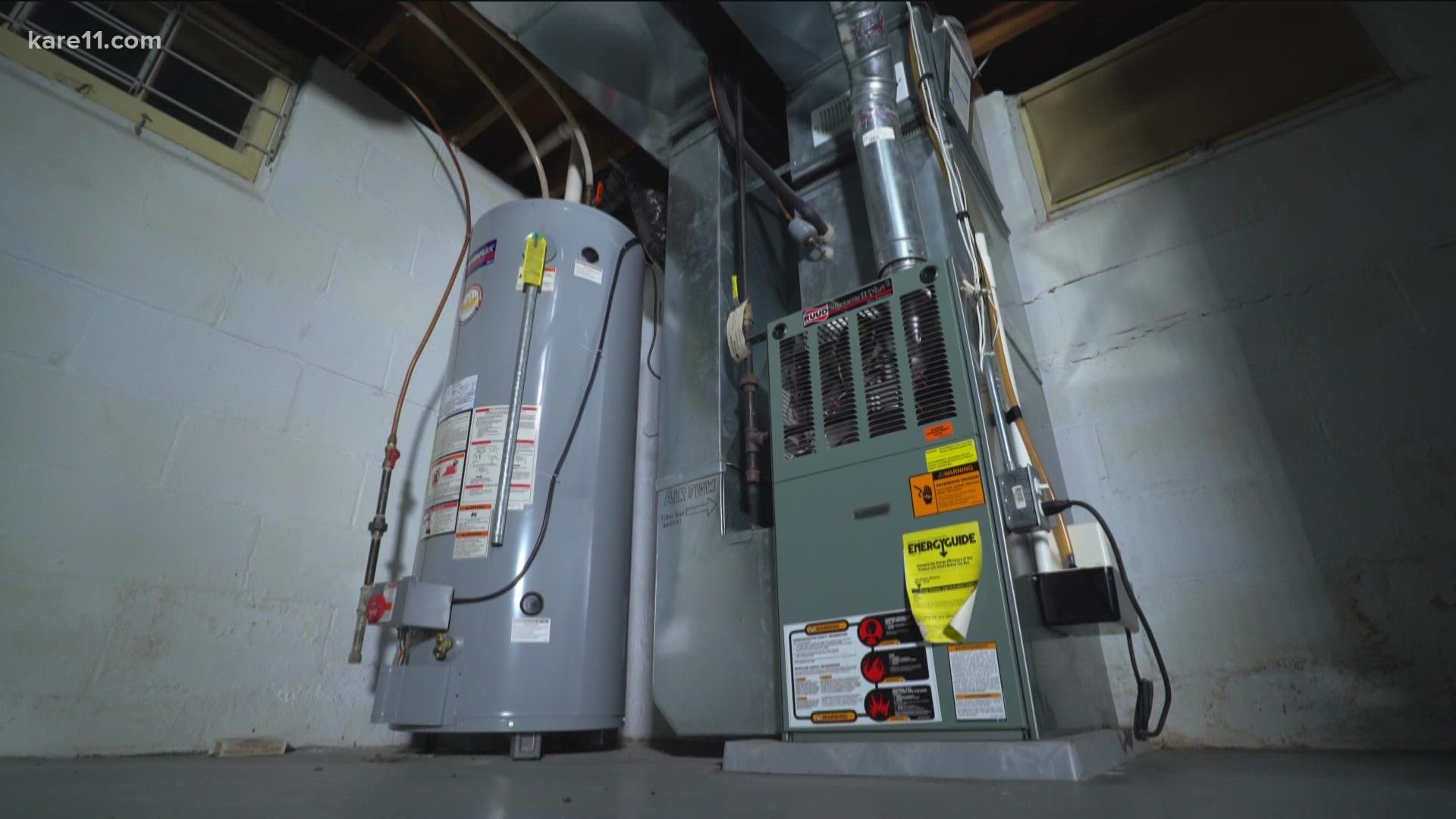MINNESOTA, USA — With temperatures plummeting toward the freezing mark overnight Thursday into Friday, many of you in the Twin Cities will be turning on your heat for the first time this season.
Prepare yourself -- and your bank account -- for a long winter.
According to a report this month from the U.S. Energy Information Administration, residential heating costs are expected to increase across the board, no matter if you use natural gas, electric, propane or even heating oil. In the Midwest region specifically, the government projects a hike of roughly 49% for natural gas customers, 69% for propane, and 5% for electric. In Minnesota, about two-thirds of users have natural gas.
A spokesperson for Xcel Energy, in fact, said "we would expect an average customer to pay an increase of about $165 over the course of the winter, due to the rising natural gas prices."
The question is, why?
"There's a lot of reasons why this is happening," said Mark Wolfe, the executive director of the National Energy Assistance Directors' Association. "I wish it was only one."
Wolfe points to a number of factors, including Hurricane Ida's disruption of natural gas pipelines, a hot summer that reduced storage levels, and the economic recovery from the pandemic putting more people on the roads using natural gas in their vehicles. Demand has increased faster than supply can catch up, leading to higher prices passed to consumers.
"Across the board, you're paying more money for energy," Wolfe said. "Up to now, it's only been for gasoline. But starting this winter, it will also be for home energy."
In addition to rising prices, government forecasters are also projecting a colder winter, leading to more heat usage.
"As we head into the winter of 2021–22," the U.S. Energy Information Administration wrote in its report, "retail prices for energy are at or near multiyear highs in the United States."
To reduce usage, Wolfe suggested calling your utility company to participate in an energy-reduction program, or taking other simple steps like calling a heating contractor to tune up your furnace or just turning down your heat at night.
However, the increase in heating costs this winter will hit low-income customers especially hard.
Tammy Stauffer, who helps administer the Energy Assistance Program with the Community Action Partnership of Hennepin County, said her organization has already received 8,500 applications for assistance in the past month -- far outpacing last year's totals.
"And they're still trying to dig out from where they had been during the pandemic," Stauffer said. "Fair to say, it could be a very tough winter for our households."
Still, Stauffer is confident that her organization, along with others that administer the assistance program, will have enough money to cover everyone who needs help. The American Rescue Plan Act, passed earlier this year, offered $4.5 billion in relief to the Low Income Home Energy Assistance Program.
"The balances we're seeing on (applicant) accounts are very large, but luckily, we do have plenty of funding right now to help as many households as possible," Stauffer said.
If you're concerned about paying your energy bill, you can contact your local Community Action Partnership or look for providers on the state's website. You can also call your utility company.
A spokesperson for CenterPoint Energy, in an email to KARE 11, suggested that "any residential customer who thinks they may not be able to pay their winter heating bills due to financial hardship should call us now to set up a payment plan and get protection against service disconnection under Minnesota's Cold Weather Rule (which runs from Oct. 1 through April 30). We can also help connect them with energy assistance to help pay their heating bills." Xcel Energy also offers similar payment plans and assistance, along with other utility companies.

